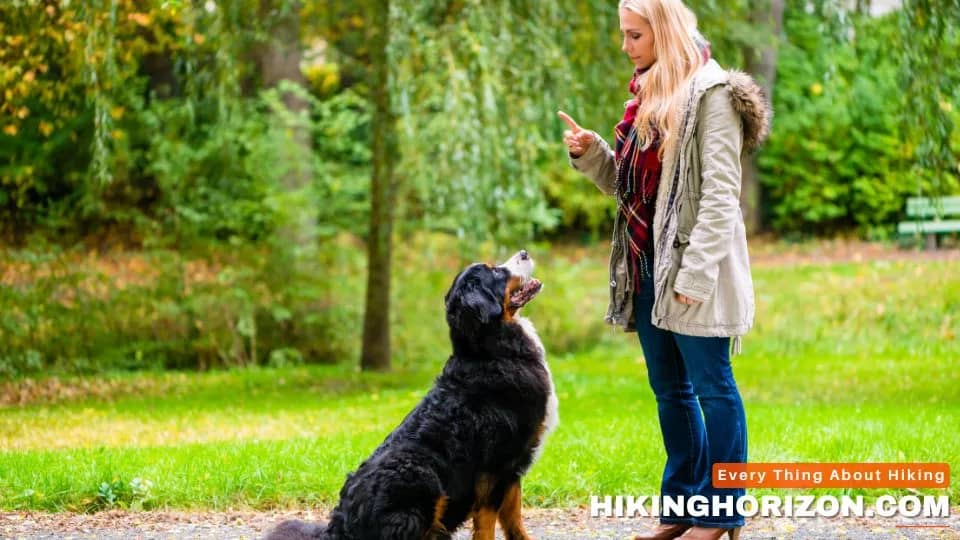
Taking your furry friend out on the trails for a hike is one of the most fun and rewarding adventures you can have together. But before strapping on the leash and heading out, it’s important to make sure your dog is properly prepared through training. Hiking with a dog takes more than just throwing them in the car and going – you’ll both have a much better time if you put in the work ahead of time.
In this complete guide, we’ll cover everything you need to know about how to train your dog for hiking, from basic obedience and leash manners to dealing with wildlife encounters, altitude, and more. By the end, your dog will be a seasoned pro on the trails. Let’s hit the path!
Table of Contents
Is Your Dog Ready for Hiking?
The first step is evaluating if your dog is ready for hiking. Factors like age, breed, temperament, and their current fitness level should be considered.
Age and Breed
Most dogs don’t reach full physical maturity until 12-18 months old. Giant breeds may take even longer to fully develop. Wait until your pup is physically mature before taking them on long or challenging hikes to avoid injury.
Some breeds, like Labrador Retrievers or Australian Shepherds, are natural hikers, while brachycephalic breeds like French Bulldogs or Pugs may struggle on trails due to breathing issues. Consider your dog’s breed tendencies and physical abilities.
Temperament
A happy, friendly dog that enjoys exploring and meeting new people and dogs will thrive on the trail. Shy, nervous or dog-aggressive pups may find hiking stressful. Make sure your dog’s temperament is suited for the hiking experience.
Fitness Level
If your dog is overweight and unused to exercise, don’t start with a strenuous backcountry trek. Build up their fitness gradually with short, easy hikes first. Get your vet’s opinion to ensure your dog’s physical condition allows hiking.
Perfect Leash Manners ─ key for a hike with your dog

One of the biggest keys to hiking with dogs is having excellent leash control. Trails typically require dogs to be leashed at all times, so practicing strict leash manners is necessary.
Aim for your dog to walk calmly by your side without pulling or lunging, as this can cause injuries and be dangerous near steep dropoffs. Loose leash walking takes time and consistency to reinforce.
Use Proper Equipment
Choose a sturdy 6-foot leash designed for large, powerful dogs. Retractable leashes do not allow for adequate control. Using a hiking-specific no-pull harness provides more comfortable guidance without straining the neck.
Pack multiple leashes in case one breaks. Carry leashes are designed for multi-dog handling if hiking with more than one dog. Hands-free leash belts are also convenient for keeping dogs close while navigating tricky terrain.
Reward Good Behavior
Correct pulling by stopping immediately and waiting for slack in the leash before continuing. Reward good loose leash walking with praise and high-value treats. Keep sessions short at first, and end on a positive note if your dog starts slipping up.
Practice in various distracting environments – parks, trails, pet stores – to solidify manners. Enlist friends with dogs to walk together and observe leash interactions. Always interrupt misbehavior quickly and redirect attention back to you.
Be Consistent
Reinforcing the same commands and techniques on every walk is vital for leash training success. Use a cue like “With me” when asking your dog to return to your side. Never allow pulling just because they are excited to be somewhere new. Remain calm but firm and consistent in your handling.
With regular training sessions of 10-15 minutes per day, your dog will adopt good leash habits that make hiking smooth and stress-free for you both. Don’t wait until you’re on the trail to start practicing!
Master Obedience Commands ─ preparing your pup for hiking
Having a dog who reliably responds to basic obedience cues is the foundation of any hiking preparation. Regular training strengthens your communication and control. Always seek to understand the reason behind your dog’s behavior rather than just reacting.
Here are some key commands to practice:
Recall:
- A solid recall is crucial for any off-leash hiking. Use a clear cue like “Come!” and reward your dog with praise and treats when they return to you.
- Practice recall frequently at home, starting inside and slowly adding distractions. Move to more challenging environments like the backyard, parks, and trails.
- On hikes, refresh their recall periodically by using treats to counter wildlife distractions. Keep them leashed if reliability is not 100%.
Heel:
- Teach your dog to walk calmly next to you without pulling or lunging. Use a no-pull harness for extra control.
- Practice heeling in a variety of environments before generalizing to the trail. Use a cue like “With me” when asking them to return to your side.
- Don’t allow pulling just because the environment is exciting and new. Be consistent.
Leave It:
- Use “Leave it” when you want your dog to ignore something on the trail, like food or small critters.
- Practice this impulse control skill at home before hiking by presenting treats and rewarding them for backing away on the cue.
- Carry treats on hikes to reinforce leaving distractions alone. This can help counter their prey drive.
Wait:
- Use “Wait” when you need your dog to pause in one place temporarily, like at a trail junction or to let others pass.
- Train at home, having them wait at doorways, before meals, etc. Increase duration gradually.
- On the trail, have them wait and reward while you assess potential hazards ahead like loose rocks or other dogs.
Sit/Stay:
- As noted for good manners, teach your dog to sit and stay when you stop on the trail to yield to others.
- Increase distance and distractions slowly during stay training at home, parks, pet stores.
- Use stay to control your dog around other hikers, especially rowdy kids. Refresh periodically.
Down:
- Having your dog lay down gets them safely out of the way on narrow trails when yielding to others.
- Train an emergency down at home to quickly get them into a down position no matter the distraction.
- You can also use them down to calm them if they get overly excited by sights and sounds on the trail.
Quiet:
- A cue like “Quiet” stops excessive barking at the wildlife you encounter. Keeps things calm.
- If they bark at stimuli at home, use quiet, then reward when they stop. You can also distract with a focus cue.
- Be aware excessive barking can be fear, uncertainty, or frustration. Address the underlying cause.
Focus
Maintaining engagement with you is crucial when navigating risky portions of the trail. “Focus” is a great cue for grabbing their attention.
Reward eye contact often so they associate giving you their attention with good things. Use focus to interrupt environmental distractions and keep your dog’s mind on the trail ahead.
With mastered obedience, you can trust your dog’s skills when adventure calls. Don’t hesitate to turn back if they become overstimulated or unreliable. Safety comes first!
| Command | Description |
|---|---|
| Recall | Come when called, even with major distractions present. Essential for off-leash hiking safety. |
| Heel | Walk calmly next to you without pulling on leash. Provides control on narrow trails. |
| Leave It | Ignore distractions like food or wildlife on the trail. Avoid dangerous situations. |
| Wait | Pause in one place when needed, like yielding for others to pass. |
| Sit/Stay | Hold position when stopping on trail to allow others to go by. |
| Down | Lay down quickly when asked to move out of the way on narrow trails. |
| Quiet | Stop excessive barking at wildlife encounters to avoid conflicts. |
| Focus | Maintain engagement with you when hiking past high risk areas. |
Is off-leash hiking safe for dogs and dog owners?
Allowing your dog off-leash on a hike can be very rewarding but also risky. An untrained dog may bolt after wildlife, approach other dogs aggressively, or simply not come when called. As the owner, you must ensure your dog has excellent recall and training first. With proper preparation, off-leash hiking can be safe and incredibly fun.
Never let your dog off-leash unless their recall is 100% reliable, even with major distractions present. Practice coming when called, starting indoors, then slowly adding more challenging situations outside. Use high-value treats to entice focus on you, not squirrels.
In addition, work on “leave it”, “wait”, and “let’s go” commands. You want to know your dog will disengage and come away if you call them back from approaching other dogs, people, or wildlife. Keep them leashed in case your dog isn’t ready. Carry spare leashes and collars.
Acclimate to hiking Gear when taking your dog for hiking

All the rugged trails and fetching views come with the tradeoff of having to strap bulky gear onto your dog. Taking the time to properly introduce equipment helps ensure their comfort and safety. Don’t just plop on the backpack and declare them trail-ready!
Hiking Packs
Special dog backpacks distribute weight evenly across their shoulders and chest. When fitted correctly, packs should not impede movement or breathing.
Start by putting an empty pack on for short periods; treats can encourage tolerance. Slowly add weight and watch for signs of chafing or fatigue. Only pack up to 25% of their body weight once conditioned. Test packs on flat terrain before trail use.
Let your dog indicate when they need a break. Be prepared to carry everything if they end up hating the pack. Some dogs never take to them.
Booties
Rugged terrain can scrape up paw pads, while hot pavement and snow can burn or freeze feet. Boots protect those puppy paws on harsh trails.
There are many styles out there; focus on getting the right fit and materials for your needs. Slowly get your dog used to wearing booties with positive rewards. Monitor for rubbing and irritation.
Not all dogs require them, but packing extra foot protection is smart just in case. Toughen those paws gradually if booties seem intolerable.
Jackets
Outdoor dogs need outerwear too! Harnesses, jackets, and blankets suited for hiking help regulate temperature and prevent overheating or chilling.
Accustom your dog to wearing each item separately before attempting full ensemble. Ensure nothing restricts movement or breathing when layered on trail. Bring backups for when the weather changes.
With patience, your dog will be strolling the trails decked out in style as a Super Trail Dog! Just take gear acclimation step-by-step.
Socialize to Distractions when training your dog to hike

Between squirrels, strangers, and sights unseen around the bend, trails present many distractions that can break your dog’s focus. Socialization and desensitization alleviate reactivity before it happens.
Other Dogs
Leashed greetings on narrow trails often go poorly. Practice passing other dogs calmly at a distance. Get their attention back on you with a focus cue and reward.
If your dog is dog-selective, give other dogs extra space, step off the trail if needed, and clearly advocate for your dog’s needs. Muzzles may help relieve defensive behaviors for some pups.
Wildlife Encounters
Teach a strong “Leave it” cue for resisting the urge to chase wildlife. Getting up close is dangerous for all involved.
Carry high-value treats on hiking outings to counter prey drive. Be ready to recall or leash your dog when animals appear. Scan ahead and reroute to avoid encounters if possible.
People and Kids
Socialize your dog extensively around crowds to prevent fearful or inappropriate reactions. Redirect jumping up and teach polite greetings.
Kids running unpredictably can be very stressful; make sure children approach calmly and follow your instructions. Muzzle use is wise if kids will be present and your dog lacks impulse control.
With enough controlled exposure to potential hiking hazards at home, your dog can take each new experience in stride. Staying focused on you keeps them from practicing bad habits on the trail.
Handle All backcountry Terrain
Mastering obstacles is a huge component of hiking readiness. While your agile dog may have the ability, they still need to develop awareness and reliability in navigating diverse trail and weather conditions. Go at their pace and positively encourage courage!
Uphill and Downhill
Practice hill workouts to build strength and stability. Reward controlled downhill movement like zig-zagging versus tearing straight down.
Watch for fatigue; dogs use different muscles than flat walking. Rest often and check paw pads for sensitivity. Massaging legs after hikes can prevent strains.
Slippery Surfaces
Expose dogs cautiously to various slick surfaces – wet grass, docks, icy patches. Reward careful steps, provide assistance if needed, and never force into unsafe situations.
Place mats under water and food bowls to simulate the sloshy footing of creek crossings. Booties help tremendously in providing traction on muddy trails.
Loud Noises
Thunder, gunshots, machinery – sounds can startle and disorient dogs into running off-trail. Desensitize to loud, jarring noises at home using recordings. Offer treats and praise for relaxed behavior rather than fear.
On the trail, get their attention back on you if loud noises occur. Carry ear protection you can quickly apply when needed. Letting dogs hide until scary sounds pass is okay too.
Your dog will adapt to hiking’s demands with training like a pro. Always put safety first and turn back if challenges exceed current abilities. There’s no shame in waiting until they mature!
Acclimate to Altitude
Most people are aware of altitude sickness risks for themselves, but dogs also need gradual exposure to avoid medical emergencies. Oxygen levels drop at higher elevations, so it takes time to build up.
Start hikes below 5,000 feet, only increasing by 1,000-foot increments per hike. Watch for panting, weakness, vomiting, or other signs of altitude sickness, and immediately descend if concerned. The general rule is no more than a 10% elevation gain per week.
Ensure your dog is very fit before attempting major summits. Carry oxygen masks that fit over their muzzle for quick treatment. Dogs with heart or respiratory conditions and certain breeds like bulldogs struggle most at altitude. When in doubt, stick to lower trails.
Scout reports mention any major elevation changes or particularly steep sections. Gauge your dog’s limits by their age, breed, and current conditioning. With slow and steady exposure, the mountain views will be exhilarating instead of exhausting for both of you!
Always Pack Proper dog gear

Having the right gear and emergency supplies makes dealing with anything the trail throws your way much less stressful. Customizing your dog’s hiking pack helps ensure you have just what they need.
Bring the Essentials
- Extra collars and leashes
- Waste bags
- Dog first aid kit
- Nutritious treats and trail snacks
- Portable water bowls
- Cooling gear like vests or collars
- Dog blankets and extra layers
- Booties, harness, jacket as needed
Maps and Navigation
- Topographic trail maps with marked mileage
- Compass/GPS in case of emergency
- Pet locator tag with contact info
For Emergencies:
- Bottled water and electrolytes
- Medical records and medication
- Light for night evacuations
- Pepper spray for aggressive dogs
- Signaling whistle
The right supplies enable you to handle most scenarios and injuries until you can exit the trail safely. Test gear beforehand and ensure proper fit. Now go enjoy the trails prepared and at ease!
| Gear | Purpose |
|---|---|
| Leash/harness | Allows control without escape or pulling injuries |
| Collar | Attaches ID and allows quick handling |
| Waste bags | For responsible cleanup |
| First aid kit | Treat cuts, sore pads, and other minor injuries |
| Water/bowls | Prevent dehydration on the trail |
| Treats/food | Provide nutrition and motivation |
| Jacket/coat | Regulates temperature in various conditions |
| Booties | Protect paws from heat/cold/rough terrain |
| Backpack | Safely carry dog supplies, condition body |
| Pepper spray | Deter aggressive dogs if needed |
Frequently Asked Questions (FAQs)
How do I train my dog to be a hiking dog?
Getting your dog ready to hit the trail requires some dog training and proper preparation. Focus on teaching cues like recall so you can call your dog when needed. Condition your dog gradually with regular walks before diving into anything too strenuous. Always reward and praise your dog’s good behavior on the trail to reinforce hiking manners. With consistent training tips for hiking, your dog will be ready to backpack with the best of them.
How do I condition my dog for hiking?
Slowly build up your dog’s endurance with short walks around the neighborhood or dog park. Increase distance and duration gradually over several weeks. Take your dog on practice day hikes to expose them to different hiking trails and terrain. Monitor for signs of fatigue or sore paw pads. Proper conditioning prepares your dog both physically and mentally before hitting long backcountry trails. Check current trail conditions to find dog-friendly hikes to start.
How do I stop my dog from pulling on the hike?
Use a front-clip harness designed to keep your dog from pulling while on a leash. Practice loose leash walking skills consistently. Encourage your dog to heel and stay close to you. Reward when they walk calmly beside you. If your dog begins to pull, immediately stop moving until the leash is loose again. With good training, your dog will learn that pulling gets them nowhere on the trail.
Is hiking hard on dogs?
Hiking can definitely take its toll on dogs if not conditioned properly beforehand. Extended hiking with lots of elevation change can wear down joints and paw pads. Always monitor your dog for signs of fatigue like panting, limping or slowing down. Take regular breaks to rest and hydrate. Carry a dog first aid kit in case of injuries. With gradual build-up and careful monitoring, hiking is a great way to exercise most dogs. Start small and stick to dog-friendly trails.
How long of a hike is too long for a dog?
A good rule of thumb is to limit hikes to 30-60 minutes for younger or very old dogs. Well-conditioned adult dogs can generally handle half-day hikes of 3-6 miles. Listen to your dog’s signals though – if they seem overtired or limping, end the hike immediately. Always bring extra water and food in case you get stuck out longer than planned. Know your limits and when to turn back based on your dog’s current fitness level.
When should I start hiking my dog?
You can start leash training and neighborhood walks with most puppies around 4-6 months old. Avoid forcing growing puppy joints with too much distance. Wait until your dog is fully vaccinated before allowing off-leash hiking or exposing them to other dogs. For backpacking and climbing, it’s best to wait until your dog is skeletally mature, usually over 1 year old. Let your dog set the pace and start conservatively.
Do dogs enjoy hiking?
Absolutely! Most dogs love exploring new environments and taking in all the exciting sights and smells. It’s a great way to bond with their owner. Just be sure your dog is adequately prepared with training and conditioning to make hiking fun vs overwhelming. Always bring plenty of water and nutritious dog treats to keep their energy up. Stick to dog-friendly trails that allow off-leash time to sniff around safely.
How much water should I bring for my dog on a hike?
Bring at least 1 liter of water per hour of hiking time, more for hot weather or high exertion. Always offer water breaks regularly to keep your dog hydrated. Consider bringing electrolyte replenishers for very long, strenuous hikes. Know the locations of streams or lakes in case you need to filter additional water. Dehydration risk is higher for puppies, senior dogs and breeds like bulldogs. When in doubt, pack extra H2O!
Do dogs like hiking in the woods?
Most dogs love the sights, sounds and smells of woodland areas and trails. It provides much needed mental stimulation. Be sure to protect your dog against foxtails, poison oak and other hazards present in wooded areas. Keep your dog on a leash unless the area is well secured, as many dogs will take off after squirrels given the chance. With proper training, supervision and protective gear, an off-leash romp in the woods can be the highlight of your dog’s hike.
Final Takeaways: how to train your dog for hiking
Preparing your dog for the physical and mental rigors of hiking is a journey in itself, but the payoff of many more adventures to come makes it all worthwhile. Here are some key tips to remember:
- Start conditioning and obedience training well in advance. Be realistic about their limits.
- Acclimate your dog slowly to trail gear like packs, booties, and jackets. Don’t force it.
- Practice focus cues and impulse control around common distractions. Stay calm and consistent.
- Build up to new challenges like altitude and distance gradually. Always monitor for fatigue and discomfort.
- Pack for all scenarios – have navigation, first aid, layers, and hydration covered.
Most importantly, know when to call it a day and turn back if needed. Learning together deepens your bond and trust for the next time. New sights and smells around every bend await you and your dog!

MARK RODRIGUEZ
Mark is an experienced backpacker who has completed several multi-day hikes, including the John Muir and Wonderland Trail. He is also a hobbyist photographer who delights in capturing the captivating essence of nature through his camera lens. Mark is passionate about environmental conservation and often volunteers for trail maintenance and clean-up projects.

MARK RODRIGUEZ
Mark is an experienced backpacker who has completed several multi-day hikes, including the John Muir and Wonderland Trail. He is also a hobbyist photographer who delights in capturing the captivating essence of nature through his camera lens. Mark is passionate about environmental conservation and often volunteers for trail maintenance and clean-up projects.
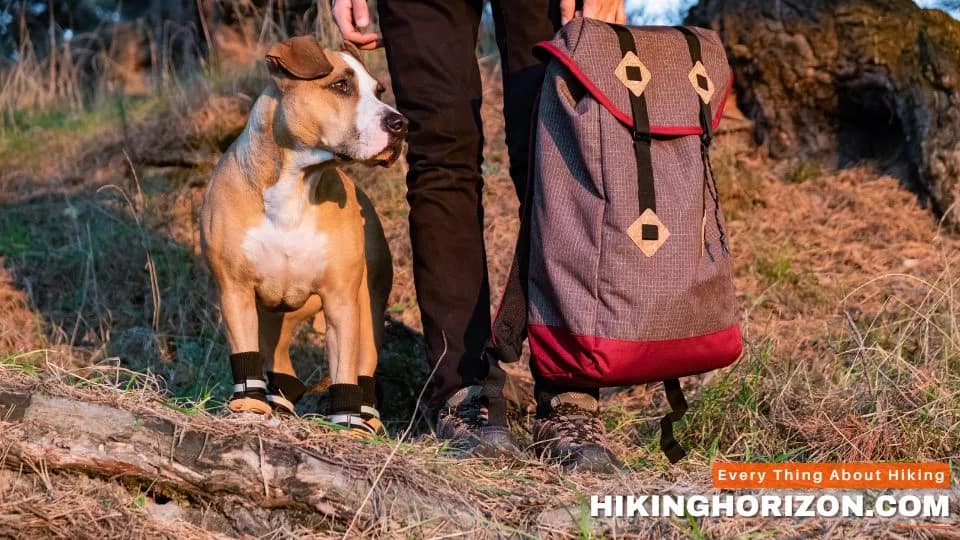
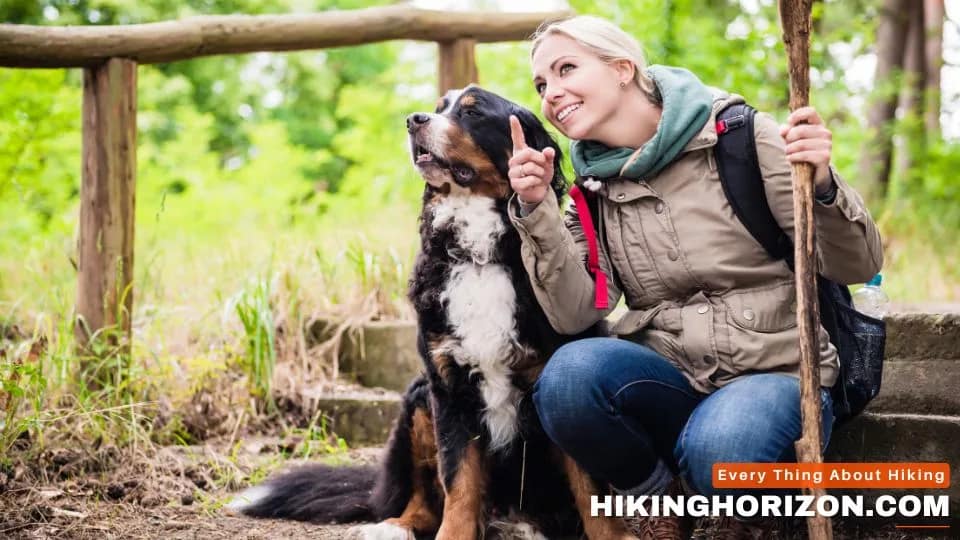
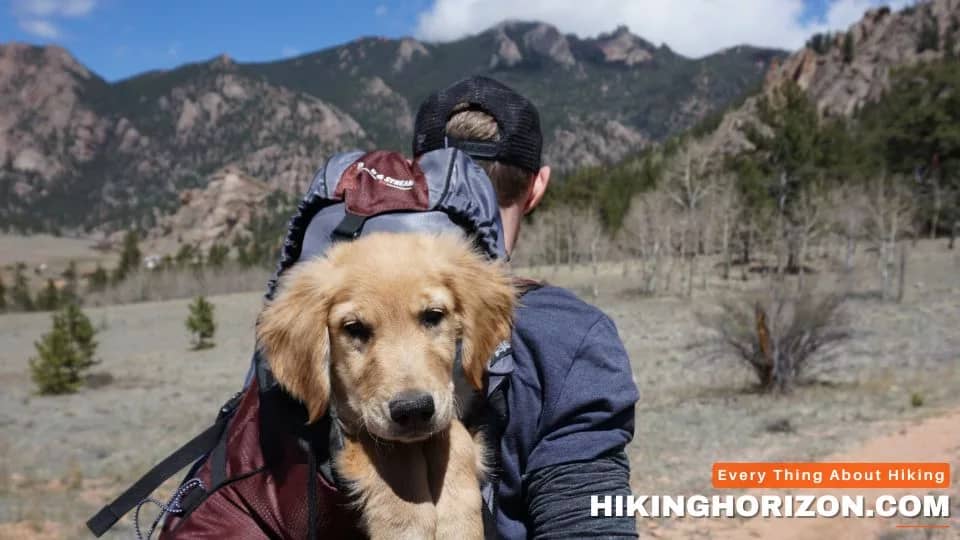
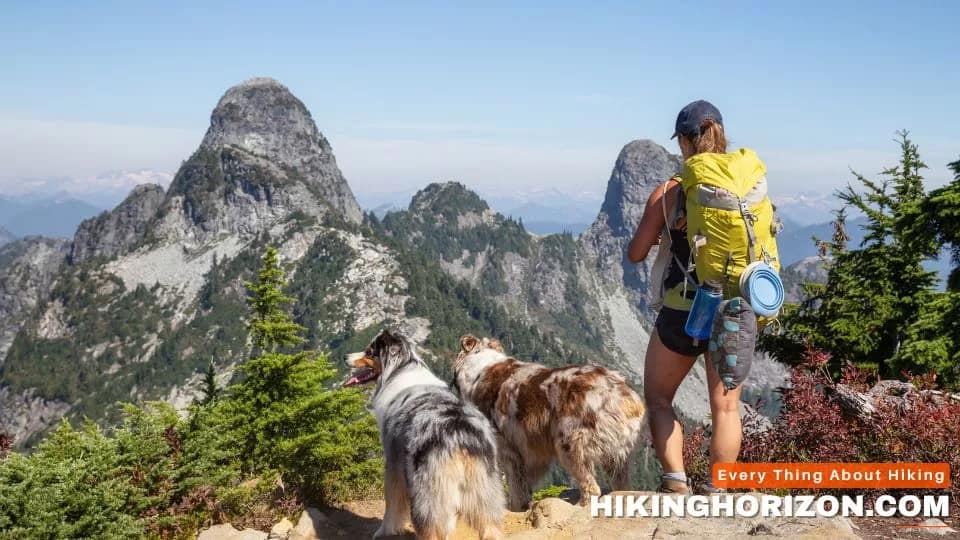
Thanks for this informative blog. Many more to read. I am planning to travel somewhere after few time with my dog. thats why we can train our dog for hiking.
Your approach to writing content for articles is quite remarkable. What a fantastic piece! I will make it a point to check it out at a later time. I have bookmarked it. In this day and age, I find that reading really intriguing articles or reviews on the internet teaches me something new and challenging.
These tips are just pawsome for getting my pup hike-ready! 🐾
Slowly building up endurance on neighborhood walks makes perfect sense before a big trek. 🐕 And teaching important cues like “wait” and “come” will keep her safe when distractions pop up on the trail! 👀
I never thought about protecting those adorable floofy paws with booties – so helpful to prevent injuries. 🥿 My silly girl tries to jump on every person and pooch we see; the advice to work on her manners is key! 😅
With this helpful training guidance, soon we’ll be bounding down trails without a leash, taking in beautiful views together as great trail buddies! 💞👯♀️🏔Can’t wait for our new adventures out there! Let’s get hiking, my furry friend! 🐶✨
Thank you Dog Lover for approaching me.
What an insightful article on preparing our loyal four-legged friends for adventure on the trails! As both an avid hiker and dog owner myself, I appreciate the thoughtful tips on getting Fido hike-ready through conditioning walks, trail exposure, proper gear, and training commands. The advice on paw protection and bringing ample water are especially important reminders before a dog’s first big hike.
This will surely help many fellow outdoor enthusiasts safely enjoy hikes with their dogs for years to come. Hiking with my dog is one of my greatest joys – thank you for sharing this knowledge!
Thank you Bahis!!
Hi there, you’ve done a great work. I will definitely check it out and tell my friends about it because I know they will find it useful.